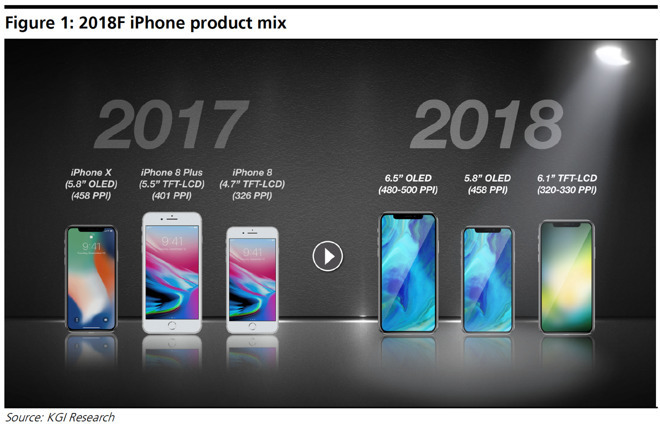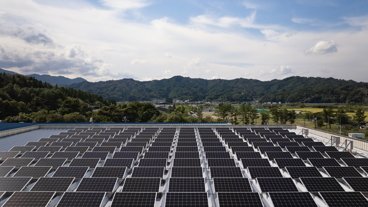Apple's plans to work with LG as a second supplier for iPhone screens appear to have suffered a blow due to manufacturing delays, according to a new report.
Reports back in January indicated that Apple and LG Display were in talks for the South Korean company to supply OLED panels, for use in the so-called "iPhone X Plus" that will arrive as part of this year's iPhone line. The idea was to diversify Apple's screen supply and reduce its dependence on rival Samsung Electronics.
But according to a Wall Street Journal story published Friday, LG is "struggling" with quality panel production, putting Apple's plans in peril. Citing "people familiar with the matter," the Wall Street Journal is reporting manufacturing problems, indicating that LG may not be ready for the start of mass production of the iPhone in July. Opinions are reportedly divided within Apple as to whether LG Display will be able to make the phones in time for this year's line.
The issue, the Journal wrote, is that LG Display specializes in TV-sized OLED panels, of which it is the world's leading supplier, although the company "has yet to nail down" the production of smartphone-sized screens.
Reports in 2017 indicated that LG would not be ready to make iPhones until 2019, although in December LG was reported to have a deal to enter the supply chain.
Bargaining Power
Apple finds itself in a disadvantageous bargaining position in dealing with only one supplier for the OLED screens, which are one of the more expensive parts of the higher-end iPhones. Complicating matters is that Samsung, the supplier, is also Apple's main hardware competitor in smartphones. Meanwhile, LG Display, also based in South Korea, is itself a major rival to Samsung.
Apple is expected to make about 100 million iPhones this year, according to analyst consensus, with about half of those using OLED screens.
A history of panels
When Apple began producing what became the iPhone X throughout 2017, it soon became clear that Samsung was the only company able to mass-produce OLED panels of the size necessary for the device. Producing OLED screens is much more difficult, as a single speck of dust is capable of ruining an entire screen during the process of initial fabrication. Samsung has long used OLED screens on its own Galaxy devices.
In addition, OLED production for TV-sized panels is a mature process that's been around for years; using the technology on a smaller scale, and with optimization for a touchscreen, is much more complicated and difficult.
Apple and Samsung first reached an OLED panel deal in 2016. But by late 2017, before the iPhone X was even introduced, analyst Ming-Chi Kuo of KGI Securities was writing that Apple was in "urgent need" of a second source of OLED panels.
Apple's deal with LG, announced in December of 2017, was meant to alleviate that need, and likely give the iPhone manufacturer more leverage for cost negotiations, but whether it actually will in a timely fashion is in question.
 Stephen Silver
Stephen Silver

-m.jpg)






 Andrew O'Hara
Andrew O'Hara
 Wesley Hilliard
Wesley Hilliard

 Malcolm Owen
Malcolm Owen
 Marko Zivkovic
Marko Zivkovic

 Chip Loder
Chip Loder
 Christine McKee
Christine McKee



-m.jpg)




11 Comments
That is shame. Samsung's OLED is one big reason for iPhone X's higher price. If Steve Job was alive, he would have used cash on hand to expedite it's own display tech like MicroLED and work with 3rd party like TSMC to manufacture. If Apple control's tech patents than choose multiple display manufacturers to mass produce at lower price.
The report on the face of it doesnt make a lot of sense. It is surely harder to make a larger screen work perfectly than a smaller one. For each batch of produced OLED sheets, any defect that would make a larger display unusable can be worked around for a number of smaller displays. If a pixel or pixels are stuck, or not bright enough, or not functioning in the centre of a ~50 inch diameter sheet it makes that sheet unusable for a 50 inch TV but usable for smaller displays. Dozens of iPhones could be cut from it.
Of course the iPhone X batches may be different but thats not elaborated here. In terms of general OLED displays LG is on par, or better than, Samsung these days.
But on the flip side the size of the pixels on a TV screen is much larger than the pixels on a phone display so a defect that ruins a few pixels on a phone screen may not cause enough damage to even be noticeable on a TV.